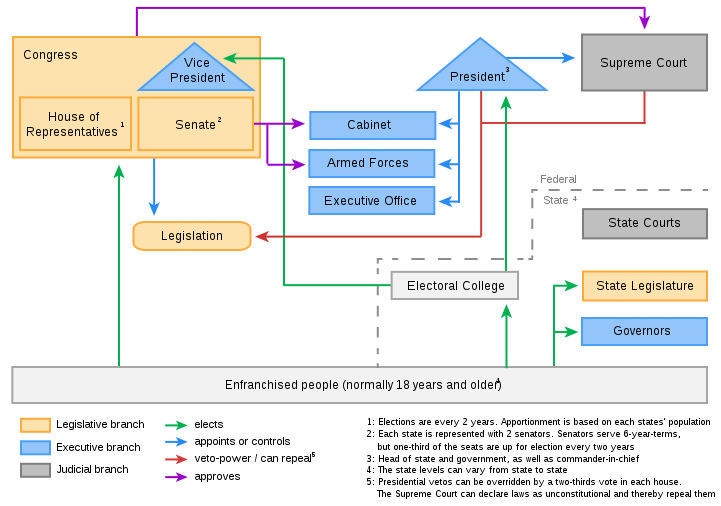Politics of the United States
The presidential elections in the United States seem confusing to you? Do not worry, it's because they are really confusing. The main difference between electing a president there and in Brazil it is here the direct vote of the people is in charge. In the US, the popular vote does not count that much.
Understand better:
Rules of the game
To apply for the presidency in the United States you must be 35 years of age or older, being born in the country and live there for at least 14 years.
Moreover, the vote in the United States is done by means of punched cards and the main is not required. To get an idea of the political participation of Americans in the last election for President of the approximately 300 million inhabitants of the country, only 142 072 000 voters were registered to vote.
The elections usually occur in November.
Primary elections
First, the US chose the presidential candidates of each party. There are several parties in the US, however, two of them who are the majority and elect more Presidents are the Democratic and the Republican.
To decide who will represent the party in the elections, the primary elections (or previous) are done in all states, so that the people choose who will be the candidate from each party. Who chooses the candidates for statement party are the party delegates. Each state then decides how to be the primary, open, closed, or free of the "Caucus". Thus, decide whether voters should be affiliated to the parties, if they can participate in the two previous parties, etc.
The preconditions start well before the elections for the presidency and the successful candidate is confirmed in Partisan Conventions. The candidate nominated as a candidate for President chooses who will be his deputy.
Constituencies
As stated above, in the US people do not vote directly for their candidate for president. The population chooses who will choose their government leader, the so-called "superdelegates" (or just delegates).
But let us first: each state has a number of delegates, which is relative to the number of inhabitants. The more populous the state, the largest number of delegates. Thus, the state is constituted constituency, which must have at least 03 delegates. As the Constitution in 1787, established the autonomy of the states, each of the 50 existing US decides to choose its delegates (if voters should be affiliated or not the parties, for example).
Altogether, there are a number of 540 delegates who are part of the Contituency in the United States. To be elected, a candidate must have a vote of 50% plus one of the delegates (271). The candidate can be all popular and receive many votes, but the most important votes come from the constituency because it the one that chooses the new president.
Most often, the Constituency follows the trend of the popular vote, and elect the same candidate voted by the people. However, four times the delegates have not chosen a candidate chosen by popular vote. In 2000, for example, Democratic candidate Al Gore got more popular votes than Republican George W. Bush, a total of 51,003,926, against 50,460,110. But Bush had more electoral votes (271-266) and ended up electing the President of the United States.
The state with the largest number of delegates is California, which has 36 million inhabitants and 55 delegates. Win win in California is 10% of the votes of all delegates of the country and an advantage for the candidate.

Curiosities
- The model of choice was instituted at creation of the US Constitution in 1797. At that time, each state wanted to maintain their rights, and especially the smaller ones, for fear of being dominated by larger, decided by cherish their autonomy. State leaders did not trust the people to choose the President and then decided that they would send their delegates (as their representatives) to make the election.
- If no candidate wins the required number of votes in the Constituency to be elected President (217), the House of Representatives decides who will be the new leader of the US government.
In the US, there are also elections to replace 34 of the 100 Senators, 435 Representatives and the governors of some states.
- The term of a President in the United States lasts four years and it can only be re-elected once, as in Brazil.
